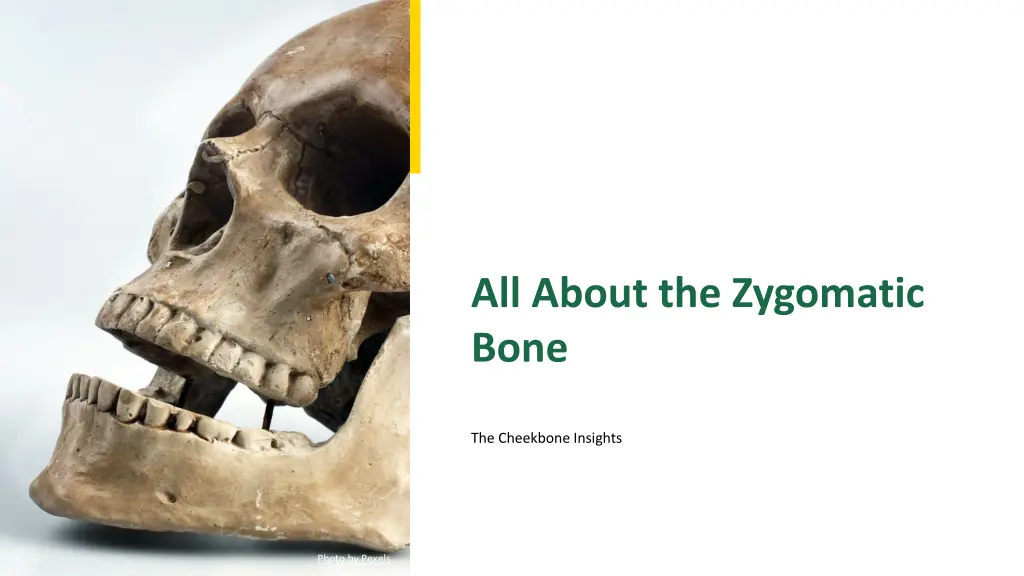
Insights into the Importance and Functions of the Zygomatic Bone
Discover the key features and clinical significance of the zygomatic bone, also known as the cheekbone. Learn about its anatomy, functions in facial structure, and its role in dental health. Explore how injuries to the zygomatic bone can impact facial aesthetics and necessitate surgical intervention for correction. Join the conversation about the beauty of facial anatomy and the significance of this vital craniofacial bone.
Download Presentation

Please find below an Image/Link to download the presentation.
The content on the website is provided AS IS for your information and personal use only. It may not be sold, licensed, or shared on other websites without obtaining consent from the author. If you encounter any issues during the download, it is possible that the publisher has removed the file from their server.
You are allowed to download the files provided on this website for personal or commercial use, subject to the condition that they are used lawfully. All files are the property of their respective owners.
The content on the website is provided AS IS for your information and personal use only. It may not be sold, licensed, or shared on other websites without obtaining consent from the author.
E N D
Presentation Transcript
All About the Zygomatic Bone The Cheekbone Insights Photo by Pexels
01 Understanding the Zygomatic Bone Table of Contents 02 Anatomy of the Zygomatic Bone 03 Functions of the Zygomatic Bone 04 Clinical Significance 05 Thank You for Your Attention!
1 Understanding the Zygomatic Bone Facial Structure Importance The zygomatic bone, or cheekbone, is vital to facial aesthetics and structure. It supports the eye socket and connects various facial bones for stability. This paired irregular bone enhances facial contours and protects vital areas. The zygomatic bone plays a significant role in dental structure and oral function. Photo by Pexels
2 Anatomy of the Zygomatic Bone Key Features Explored The zygomatic bone consists of three processes: frontal, temporal, and maxillary. These processes connect to the frontal bone, temporal bone, and maxilla respectively. The bone's structure allows for unique facial features and expressions. Understanding its anatomy aids in medical fields like dentistry and surgery. Photo by Pexels
3 Functions of the Zygomatic Bone More than Aesthetic It provides protection to the underlying structures like the eye and brain. Serves as an attachment point for facial muscles, aiding in movement. Contributes to the overall function of the craniofacial skeleton. Affects oral health by supporting maxillary dental structures. Photo by Pexels
4 Clinical Significance Zygomatic Bone in Medicine Injuries to the zygomatic bone can lead to facial asymmetry or dysfunction. Fractures often require surgical intervention for correction and healing. Understanding its position is crucial in maxillofacial surgery. It plays a role in cosmetic procedures due to its prominence. Photo by Pexels
5 Thank You for Your Attention! Questions & Discussions We appreciate your interest in learning about the zygomatic bone. Feel free to ask any questions or share insights regarding this topic. Your engagement enriches our understanding of anatomical structures. Let's keep the conversation going about the beauty of facial anatomy. Photo by Pexels
